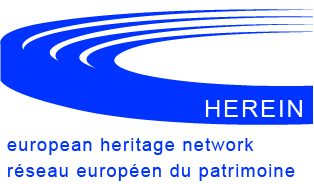 Netherlands
Netherlands
More detailed report: National Policy Report
Thesaurus: Thesaurus - Dutch terms
Glossary: Terms in Dutch
National coordinator: Ben de VRIES

 CULTURAL HERITAGE POLICY
CULTURAL HERITAGE POLICY
...
 INSTITUTIONAL FRAMEWORK
INSTITUTIONAL FRAMEWORK
The tasks of the Cultural Heritage Agency of the Netherlands (Rijksdienst voor het Cultureel Erfgoed) go beyond merely preserving and protecting buildings, sites and works of art. Today, society devotes increasing attention to how cultural historical values can be given a place within spatial development plans and projects.
The Kingdom of the Netherlands (17,2 million of inhabitants) has about 63.000 national listed buildings and (archaeological) sites; 470 protected town and village views; 10 UNESCO World Heritage sites; 3 European Heritage Labelled sites, and 140.000 objects in the State Art Collection under the Agency’s management.
The Agency in charge is the Netherlands’ centre of expertise for heritage which connects three key elements: government policy, scientific knowledge and practical expertise. The government incorporates the Agency’s specialist knowledge into legislation and rules designed to protect and develop the heritage.
The Cultural Heritage Agency is an executive body of the Ministry for Education, Culture and Science and counts on 315 staff at four locations:
- The Headquarter in Amersfoort – where the management team, the Advisory and Legal Services, the Immovable Heritage Research and the Knowledge, Knowledge Exchange and Operations sectors are situated;
- The Movable Heritage Research and Knowledge centre in Amsterdam and;
- The Art Collections sector in Rijswijk, soon moved to Amersfoort, which manages the art repository.
The Agency administers:
- The Register of monuments and historic buildings (only available in Dutch);
- The State art collection;
- The National Depot for Ship Archaeology and;
- The centralized archaeological information system, Archis 3.0 (only available in Dutch).
Since the late twentieth century – provincial authorities, water boards and local authorities in general played a leading role in the Dutch heritage management. The Cultural Heritage Agency helped the later in implementing their heritage policy, developing for example a digital guide addressed to the local authorities with the aim to support them in managing the territorial planning. In this context, the modernization of heritage management means that local authority’s plans take into account the cultural heritage sites. Also, the Agency advises local authorities on permits for major building works affecting listed buildings or sites -including demolition, reconstruction or changes of function- as well as it advises on important and costly restoration projects.
 LEGAL FRAMEWORK
LEGAL FRAMEWORK
Laws on cultural heritage:
- The Heritage Act: In 2016 a new overall Heritage Act (Erfgoedwet) was implemented. The Act lays down rules governing the disposal of cultural property and collections by government authorities. It places a duty on the Minister for Education, Culture and Science to add high-quality items of cultural property or collections to the national collection if the owner is no longer able to look after them and wishes to donate them to the State. For archaeologists the Act will mean the replacement of the permit system with statutory certification and greater self-regulation. Shipwrecks will also be better protected. At present, the protection of Dutch heritage is governed by a number of different statutes and regulations, but these provisions will now be combined in a single Act.
which includes the Archeologiewet - The Archaeological Heritage Management Act (Legislation)
- The Spatial Planning Act (Wet op de Ruimtelijke Ordening 2007 (WRO), which includes the Environment & Planning Act (change into Omgevingswet, will take into effect in 2021). The government wants to combine and simplify the regulations for spatial projects. The aim is to make it easier to start up projects, for example, the construction of housing on former business parks, or the building of wind farms. Currently, environmental legislation consists of dozens of laws and hundreds of regulations for land use, residential areas, infrastructure, the environment, nature and water. Each has its own starting points, procedures and requirements. This makes the legislation too complex for the people who have to work with it. Consequently, it takes longer to get projects off the ground. A single environmental plan for the entire area means fewer regulations and more cohesion. Moreover, the Act is more in line with European regulations and allows more room for private initiatives. By then, heritage care is combined in two acts: the Heritage Act and the Environmental & Planning Act.
- Natuurbeschermingswet 1998 - The Nature Protection Act
 RATIFIED INTERNATIONAL CONVENTIONS
RATIFIED INTERNATIONAL CONVENTIONS
- The Convention of The Hague (1954): signed and ratified in 1954;
- The Convention on the Protection of the World Cultural and Natural Heritage (1972): joined in 1992;
- The Convention on the Means of Prohibiting and Preventing the Illicit Import, Export and Transfer of Ownership of Cultural Property (1970): joined in 2009;
- The European Cultural Convention (1954): signed in 1956;
- The Convention for the Protection of the Architectural Heritage of Europe (Granada, 1985): ratified 1994;
- The European Landscape convention (Florence, 2000): ratified in 2005;
- The Malta Convention (Valletta, 1992): ratified in 2007
- The UNESCO Under Water Heritage, ratified in 2016
- Faro Convention under discussion now
See also: https://cultureelerfgoed.nl/dossiers/internationaal-beleid/internationale-verdragen#2



